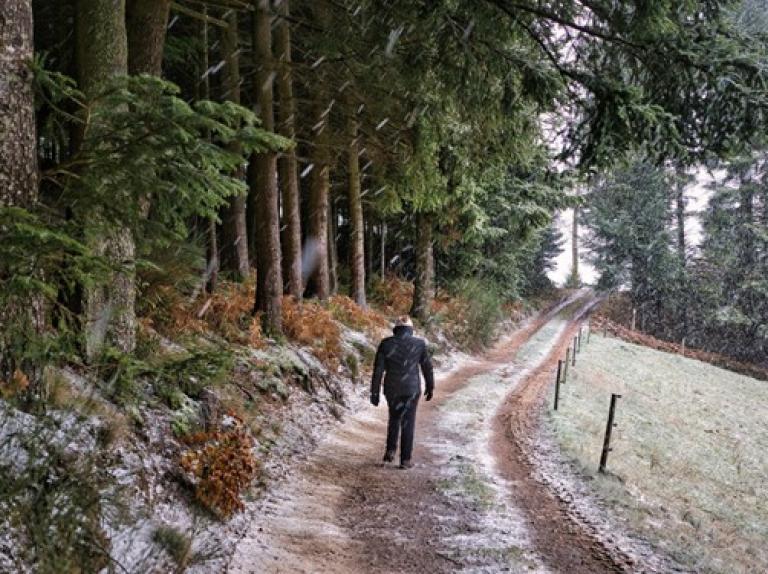
Drawing on lessons from the COVID-19 pandemic, this piece outlines five strategies for DMOs to navigate today’s global travel challenges: maintain visibility, collaborate, communicate with purpose, embrace inclusivity and stay adaptable. These proven approaches can rebuild trust, strengthen connections and position destinations for long-term success.
The travel, tourism, and hospitality industry is once again navigating uncertainty. While domestic travel remains strong, international travel to the U.S. has declined significantly – projected to result in a $12.5 billion loss in revenue in 2025, according to Travel and Tour World.
The good news? We’ve been here before. The challenges we face today – economic strain, political headwinds, and shifting traveler sentiment – mirror those of past disruptions, including the COVID-19 pandemic.
We looked back at the e-book “Flashes of Brilliance,” taken from interviews between Travel Alliance Partnership’s Nicole Mahoney and 26 tourism leaders at the 2021 Destinations International Annual Conference to find the key strategies that helped destinations adapt, lead and recover.
Many of those same strategies are just as relevant now, and have present-day examples of how destinations are utilizing them. Unlike during the pandemic, people are still traveling – giving DMOs a vital opportunity to meet the moment with clarity, creativity, and purpose.
Here are five lessons from the COVID era that can help DMOs navigate today’s evolving travel landscape:
1. Stay in the Market
Destinations that maintained a marketing presence during the COVID-19 pandemic were among the first to recover when restrictions lifted. The same principle holds true today: consistent, empathetic marketing builds long-term trust and positions destinations for quicker recovery when international sentiment improves.
Remaining active in the market keeps your destination top of mind and shows international audiences that they’re still welcome and wanted – even during challenging times. Messaging that acknowledges concerns, answers key questions and reinforces safety and welcome can reduce hesitation and increase traveler confidence.
It’s also important to recognize that international travelers are not the same as they were pre-pandemic. Their needs, expectations and motivations have evolved. As Mahoney noted in “Flashes of Brilliance,” “Marketers need to know what the traveler wants and deliver the right messages and campaigns at the right time to help them in their journey.”
A great example: the North Country Chamber of Commerce in New York created a bilingual landing page for Montreal travelers, offering practical information about border crossings, local deals and a link to a Canadian TV spot targeting Quebec visitors. It’s a thoughtful, timely approach that helps remove barriers and fosters connection.

2. Establish Collaborations
Collaboration was a cornerstone of pandemic recovery – and it remains just as critical today. During COVID-19, destinations formed regional, statewide, and cross-sector partnerships that pooled resources, exchanged data and amplified impact. These joint efforts built trust, stretched budgets, and reassured travelers through collective strength.
In today’s climate, with global uncertainty affecting travel decisions, DMOs must continue to lean on one another. As Leslie Bruce, CDME and chair-elect of Destinations International, put it: now is the time for radical collaboration.
In “Flashes of Brilliance,” Kurt Krause talked about Visit Norfolk’s partnership with nearby Virginia Beach on a campaign called “Together at Last.” By combining budgets and messaging, the two destinations created a $1 million marketing initiative that generated $6 million in room sales – proof that working together can pay dividends.
An example of how DMOs are collaborating to restore international travel sentiment is Visit California’s campaign “California Loves Canada,” which showcases exclusive travel deals and welcoming messaging tailored to Canadian visitors. It's a timely reminder that collaboration can demonstrate shared values – and reopen hearts and borders.

3. Communication is Key
During the pandemic, DMOs quickly became trusted messengers, sharing updates on mandates, safety protocols and inspiration with residents, businesses and travelers alike. This shift elevated the DMO’s role within the community, often securing them seats at tables they hadn’t been invited to before. It was a powerful reminder of tourism’s importance to the local economy – and of the DMO’s role in connecting people during times of disruption.
Today, the communication challenge is different but just as urgent: how do we rebuild international visitor confidence amid declining sentiment toward U.S. travel? While public health may no longer be the core issue, the crisis is now one of perception – and proactive, strategic communication is key to rebuilding trust.
Local insights into traveler sentiment, concerns and values should inform both messaging and programming – and that requires constant conversation with partners on the ground. An important piece of this is storytelling. During the pandemic, the Pocono Mountains Visitors Bureau used its TV station to share authentic local stories and elevate nonprofits, small businesses and community voices. That kind of narrative-driven communication builds emotional connection and demonstrates shared values like sustainability, diversity, wellness and inclusion – all critical to today’s global traveler.
Above all, communication should be empathetic and human-centered. As shared during TAP’s Community Conversation on Cross-Border Tourism, travelers are looking for reassurance. Storytelling that highlights personal and business ties between communities – especially across borders – can help shift perceptions and strengthen cultural connection.
Communication isn’t just about promotion – it’s about stewardship. Destinations that lead with transparency, empathy and consistency will not only stand out, but earn long-lasting trust. Now is the time for the travel industry to come together and share the stories that show the U.S. at its best – welcoming, vibrant and open.

4. Be Welcoming to All
The pandemic reminded us that destinations aren’t just built for visitors – they are shared spaces for residents, workers and travelers from every background. During those uncertain years, many DMOs embraced a broader mission rooted in empathy, inclusion and community value that was backed by strategy, structure and commitment.
That same intentionality must now guide how destinations show up for both domestic and international audiences. As global perceptions of the U.S. fluctuate, DMOs have a responsibility to demonstrate that their communities are safe, inclusive and open to all.
This begins with acknowledging complex realities. If international sentiment toward the U.S. is strained, don’t ignore it – address it with honesty and humanity. Destinations can counter broad skepticism by spotlighting local people and programs that reflect hospitality, diversity and shared values. Highlighting community initiatives around equity, sustainability and cultural connection can help build trust and reframe the narrative.
Welcoming travelers also starts long before they arrive. That means investing in multilingual and multicultural messaging. Translation is just the first step – your tone, visuals and voice must also reflect the culture and values of the audience you’re trying to reach. Ask: Do our campaigns reflect who we want to welcome? Will visitors see themselves in the stories we tell?
The on-the-ground experience matters just as much. Inclusive destinations consider the full range of visitor needs—religious, dietary, mobility, neurodiverse—and train frontline teams to deliver culturally aware, accessible service. Inclusivity isn’t just a marketing message; it must be built into every touchpoint of the visitor journey.
Building strong relationships with underrepresented partners can help shape a more inclusive and authentic visitor experience. During the pandemic, Discover Albany dropped traditional membership barriers and revealed a wider range of local voices and businesses. This shift opened up new storytelling opportunities and fostered deeper community connection.
Ultimately, a truly welcoming destination doesn’t just say it – it shows it. Today’s travelers, especially younger generations, are values-driven. They choose destinations that align with their worldview. By embracing inclusive practices and sharing authentic stories, DMOs can not only expand their audience but also lead with integrity in a world that increasingly values belonging, equity and trust.

5. Adaptable & Flexible
One of the most enduring lessons from the pandemic is that rigid, one-size-fits-all strategies no longer serve DMOs. Adaptability wasn’t just a temporary survival tactic – it became a long-term advantage. Annette Rummel of Go Great Lakes Bay said it best when she described her team’s mindset as “semper gumby” – forever flexible.
That mindset is just as essential today. The travel landscape continues to shift, shaped by evolving traveler preferences, economic uncertainty and geopolitical tension. To stay competitive, DMOs must embrace flexibility as an operational strategy, not just a response to crisis. And in a fast-moving landscape, the ability to listen to data and pivot confidently is a must.
Travelers today are drawn to experiences that feel personal, uncrowded and authentic – trends that accelerated during the pandemic and haven’t faded. Rural destinations, nature-based attractions, and cultural immersion are in high demand. DMOs that promote hidden gems and support lesser-known local partners can offer the kind of meaningful, less-commercialized experiences visitors crave.
Preparation is part of adaptability, too. From shifting visa policies to volatile exchange rates or border closures, global travel can be unpredictable. DMOs must proactively ask the tough “what if” questions: What happens if a major market drops off? What if a core funding stream dries up? As Josiah Brown of New York Sherpa suggested, every organization should build scenario plans and maintain financial reserves to weather sudden change.
Ultimately, agility isn’t a short-term strategy – it’s a long-term competitive edge. By staying responsive to traveler sentiment, leaning into local assets and remaining open to change, DMOs can lead with resilience and confidence – no matter what comes next.
Conclusion: The Playbook Already Exists
While today’s challenges may feel new, they’re not unfamiliar. The pandemic tested the travel and tourism industry like never before – and DMOs rose to meet that moment with creativity, collaboration and courage. Those same qualities are needed now.
What we learned in crisis is just as valuable in recovery. Staying visible, working together, communicating with purpose, welcoming all and staying agile aren’t just lessons from the past – they are strategies for the future.
As traveler expectations shift and global sentiment evolves, DMOs are in a powerful position to lead – not just in marketing destinations, but in stewarding their communities and shaping what tourism looks like next.
The playbook is in our hands. It’s time to turn the page – and use it.
Submit Your Thought Leadership

Share your thought leadership with the Destinations International team! Learn how to submit a case study, blog or other piece of content to DI.


